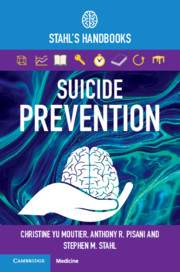Book contents
- Suicide Prevention
- Suicide Prevention
- Copyright page
- Contents
- Acknowledgements
- Section 1 Suicide Prevention Overview
- 1 Translating Science into Action
- 2 Dispelling Myths Surrounding Suicide
- 3 The Public Health Model of Suicide Prevention
- 4 Understanding Why: Drivers of Suicide Risk
- Section 2 Clinical Risk Assessment and Care
- Section 3 Special Topics: Medicolegal Considerations and Specific Populations
- Appendix Resource List
- Index
- References
1 - Translating Science into Action
from Section 1 - Suicide Prevention Overview
Published online by Cambridge University Press: 15 May 2021
- Suicide Prevention
- Suicide Prevention
- Copyright page
- Contents
- Acknowledgements
- Section 1 Suicide Prevention Overview
- 1 Translating Science into Action
- 2 Dispelling Myths Surrounding Suicide
- 3 The Public Health Model of Suicide Prevention
- 4 Understanding Why: Drivers of Suicide Risk
- Section 2 Clinical Risk Assessment and Care
- Section 3 Special Topics: Medicolegal Considerations and Specific Populations
- Appendix Resource List
- Index
- References
Summary
The current scientifically informed view of suicide is that, while complex, suicide is a health-related outcome. Driven by a convergence of health factors along with other psychosocial and environmental factors, suicide risk is multifactorial. Like most health outcomes, a set of genetic, environmental, and psychological/behavioral factors are relevant. It is critically important that health professionals develop a current understanding of suicide as older views have permeated and clouded societal understanding leading to assumptions and judgment that have silenced generations of people suffering suicidal struggles or loss of a loved one to suicide.
- Type
- Chapter
- Information
- Suicide PreventionStahl's Handbooks, pp. 3 - 17Publisher: Cambridge University PressPrint publication year: 2021



